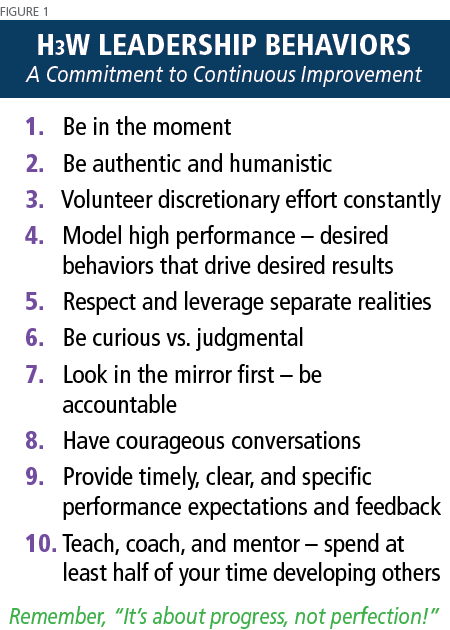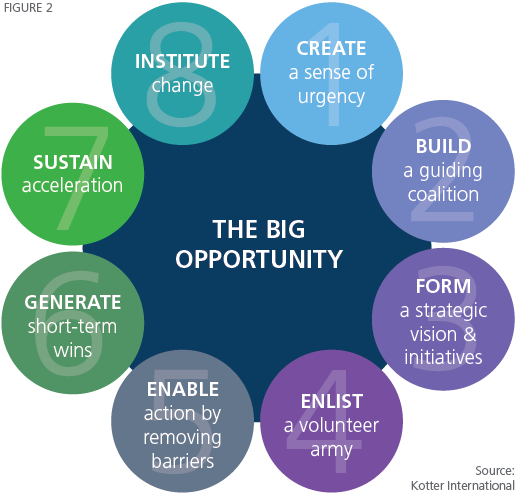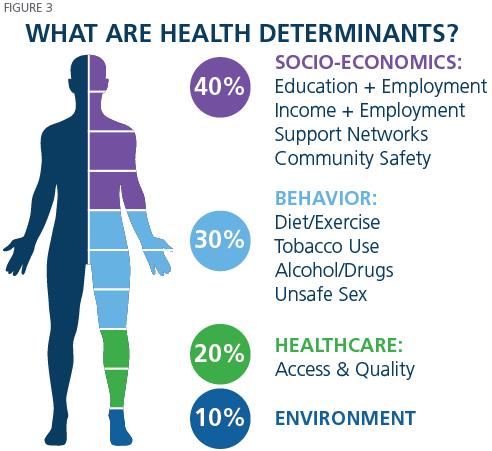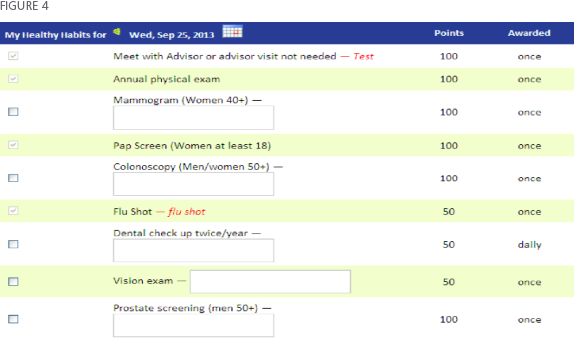B.E. Smith Team | November 29, 2017
Four Timely Themes from the Becker’s Hospital Review CEO + CFO Roundtable
Befitting its target audience, Becker’s Hospital Review CEO and CFO Roundtable tackled pressing major issues in care quality, financial health, and leadership. B.E. Smith was in attendance and offers this Executive Brief to synthesize four themes which dominated much of the conversation at this year’s conference.
Organizational Culture Merits Top Attention
B.E. Smith research shows culture is emerging as an increasingly potent force in healthcare organizations. This year’s Leadership Intelligence Report found Brand/Culture to be the top influence in talent recruitment and second in retention. Culture was also a strong focus for several speakers at this year’s roundtable.
 Elliot Joseph, CEO of Hartford HealthCare, addressed culture in the session “Investing in the Culture: Building Organizational Capacity for Customer Experience.” The leadership at Hartford HealthCare recognized a need to create and “hardwire” a new culture that would integrate the organization and optimize the patient experience from registration through billing. It undertook a campaign dubbed H3W – How Hartford HealthCare Works. The program’s success centered on leadership becoming “personal and accountable.” Figure 1 presents the desirable personal qualities sought.
Elliot Joseph, CEO of Hartford HealthCare, addressed culture in the session “Investing in the Culture: Building Organizational Capacity for Customer Experience.” The leadership at Hartford HealthCare recognized a need to create and “hardwire” a new culture that would integrate the organization and optimize the patient experience from registration through billing. It undertook a campaign dubbed H3W – How Hartford HealthCare Works. The program’s success centered on leadership becoming “personal and accountable.” Figure 1 presents the desirable personal qualities sought.
Joseph asserted that accountability must come through measurement. Hartford instilled culture and engagement into one-third of its balanced scorecard objectives. Joseph also presented data suggesting this effort can produce benefits. In Harford HealthCare’s case, the results came in the form of meaningful market share gains.
In the keynote presentation, “Culture: Solving for Why,” Mitch Wasden, CEO at Oregon Health and Science University, opened the session with a challenge. “If culture is that powerful, why do we have strategy retreats and strategic plans, but no culture retreats and plans?” He then cited three demonstrated benefits from creating a high-performance environment:
- An engaged workforce
- Improved quality and safety measures
- Higher patient satisfaction - referencing two hospitals whose public scores jumped from the 15th to the 90th percentile
Wasden recommended several culture-building strategies including:
- Managing complexity with simplicity. Create a team environment characterized by alignment of vision, cohesion, and autonomy to empower action.
- Ensuring leadership stays focused on the desired cultural outcomes. Employees “focus on what the leader focuses on” and “will never model behavior if the leader doesn’t model it, recite it at huddles, reward for it, and hire for it.”
An important aspect of building strong culture is promoting diversity. In the session “Perspective of a Woman CEO,” Jean Scallon, CEO of Bloomington Meadows Hospital, presented direct advice to emerging female healthcare leaders and the organizations seeking to develop these executives:
- Get involved in professional organizations to get noticed
- Mentor and coach as well as be mentored
- Constantly improve and learn
- Hire people who fill your strength gaps
Develop Leadership for Change and the Future
Helping leaders navigate the transforming healthcare landscape is always a popular topic at Becker’s Hospital Review conferences. Several sessions examined issues related to change and adaptation. In “Leadership’s Role in the Context of Change and Crisis Management,” T. Douglas Lawson, President, Baylor University Medical Center and North Texas Central Region, discussed the unique challenges confronting healthcare leaders. Lawson quoted noted management expert John Kotter, “Changing highly interdependent settings is extremely difficult because, ultimately, you have to change nearly everything… which can rarely if ever be accomplished by just a few people.”
 Lawson reviewed several examples of this management complexity, such as maintaining one’s culture in a merger and acquisition scenario, managing a rapidly changing financial environment using “integrated work plans” and continuous improvement mechanisms, and “taking responsibility to prepare staff for times of crisis and support staff during crisis.” Lawson returned to Kotter to offer the audience his “Eight Stage Process” to foster successful transformation as shown in Figure 2. Lawson suggested following this process will help leaders obtain early wins, consolidate them and produce more, and “anchor all the new approaches in the culture.”
Lawson reviewed several examples of this management complexity, such as maintaining one’s culture in a merger and acquisition scenario, managing a rapidly changing financial environment using “integrated work plans” and continuous improvement mechanisms, and “taking responsibility to prepare staff for times of crisis and support staff during crisis.” Lawson returned to Kotter to offer the audience his “Eight Stage Process” to foster successful transformation as shown in Figure 2. Lawson suggested following this process will help leaders obtain early wins, consolidate them and produce more, and “anchor all the new approaches in the culture.”
As value-based care demands achievement of better quality outcomes balanced by tight financial discipline, the need to identify and develop physician and other clinician leaders has grown dramatically. This was the focus of the session, “Developing the Clinical Leaders of the Future.” John Kalix, COO of North American Partners in Anesthesia, advised his audience to consider three key questions:
- Do you have a tool/method for screening your future leaders?
- In a digital world, have you exposed your future clinical leaders to technology related projects?
- Do you have a specific program exclusively to shape your “in the trench leaders?”
By way of response, Kalix described his organization’s leadership development program. It is designed to train clinicians “to interact effectively with administrators, staff and colleagues.” The program features Wharton School executive education and three important tools:
- Bi-monthly virtual classes
- Emotional intelligence surveys and 360-degree feedback
- Project management development and execution training
Kalix also stressed the need for significant technological exposure for clinicians. He presented the example of his organization’s introduction of a remote video auditing system for the OR and its use and benefits for all their clinicians. Get physicians involved in technology, he concluded, asserting “just ‘attempting’ innovation helps develop clinical leaders.”
Advance Population Health
 B.E. Smith surveys and independent research consistently show high interest in population health management, yet many organizations lack a program or are in the very early stages of development. A number of speakers conveyed the importance of population health and offered specific considerations on data and structural requirements. In “Advancing Population Health and Engaging Consumers,” a panel of executives from Renown Health focused on the multivariate determinants of population health as essential understanding. It is a complex factor set as summarized graphically in Figure 3.
B.E. Smith surveys and independent research consistently show high interest in population health management, yet many organizations lack a program or are in the very early stages of development. A number of speakers conveyed the importance of population health and offered specific considerations on data and structural requirements. In “Advancing Population Health and Engaging Consumers,” a panel of executives from Renown Health focused on the multivariate determinants of population health as essential understanding. It is a complex factor set as summarized graphically in Figure 3.
A key barrier today is “present databases lack major determinants,” and it has proven difficult to obtain longitudinal data or “quantify behavioral changes on healthcare costs.” The Renown Institute’s mission is to develop a robust “multigenerational dataset” that will be transformative for population health. The requirements for this endeavor include partnerships with for-profit and non-profit research leaders and use of technologies such as wearables, social media, and social robots.
Michael Wallace, CEO at Fort HealthCare, reinforced the complexity of the population health determinants issue in the session “Fort Healthcare: Journey to Improve the Jefferson County Community.” Wallace cited studies suggesting our present focus on direct medical care represents only 10% of the health status factors. Rather, the system must increasingly influence the far greater inputs of Lifestyle, Behavior, and Human Biology. Healthcare must “evolve from a ‘React and Respond’ model to a ‘Predict and Prevent’ model.” Wallace’s hospital pursued this mission with two major, multifaceted initiatives.
 The first involved an employee wellness drive that implemented a wide range of activities such as preventative care, “walking meetings,” a farmer’s market, and emphasis on diet and “health 365 classes.” Biometric and other activity tracking was displayed for each employee through an online portal (see Figure 4 for a sample view).
The first involved an employee wellness drive that implemented a wide range of activities such as preventative care, “walking meetings,” a farmer’s market, and emphasis on diet and “health 365 classes.” Biometric and other activity tracking was displayed for each employee through an online portal (see Figure 4 for a sample view).
The second initiative moved beyond the four walls with creation of a “Community Wellness Department.” The department was charged with being a clearinghouse for diverse population health projects, acting as an action catalyst, and assisting in generating outcomes through evaluation and measurement. Once again underscoring the primacy of data, Wallace described the centerpiece activity of the program: a five-year, door-to-door community health survey. The insights derived drove Fort HealthCare to establish many coalitions to focus on “monitoring nutrition and increasing physical activity and water consumption that will ultimately improve chronic disease management.” Results have been impressive, with county health rankings improving substantially over the past three years.
Improve Decisions Through Big Data
One of the most promising healthcare developments in recent years has been the construction of vast data repositories and the use of advanced analytics technologies to mine data for meaningful clinical and operational insights. Often labeled “Big Data,” this approach was covered in depth by Kurt Wrobel, CFO of Geisinger Health Plan. In the session “Beyond Big Data: How to Merge Insight and Analytics to Make Better Business Decisions,” Wrobel described how his organization is leading efforts in analytics. He stressed the importance of putting data in service of making good decisions. Wrobel presented his graphic representation of the model process as shown in Figure 5.

Wrobel also urged listeners to attend to various data analysis concerns such as:
- Inaccurate data collection
- Reliance on historical data
- Simplifying assumptions with complex models
- Lack of holistic decision-making
An important factor in deriving good decisions from big data is bias avoidance. Both decision makers and technical teams frequently exhibit interpretive biases which can lead them astray. Wrobel cited examples like “falling for a good story,” confusing correlation and causation, “proinnovation bias,” and letting political or financial considerations influence conclusions. Among his creative recommendations to overcome these issues are teams specifically assigned to identify and expose individual biases as well as forming competing teams to analyze a question.
Conclusion
The takeaways from this year’s Becker’s Hospital Review CEO and CFO Roundtable were timely and important, covering the role of culture, leadership for change, population health management, and realizing the myriad benefits from data analytics. The guidance provided is certain to illuminate the successful paths for better patient care, and improved financial and operational outcomes.
Read More